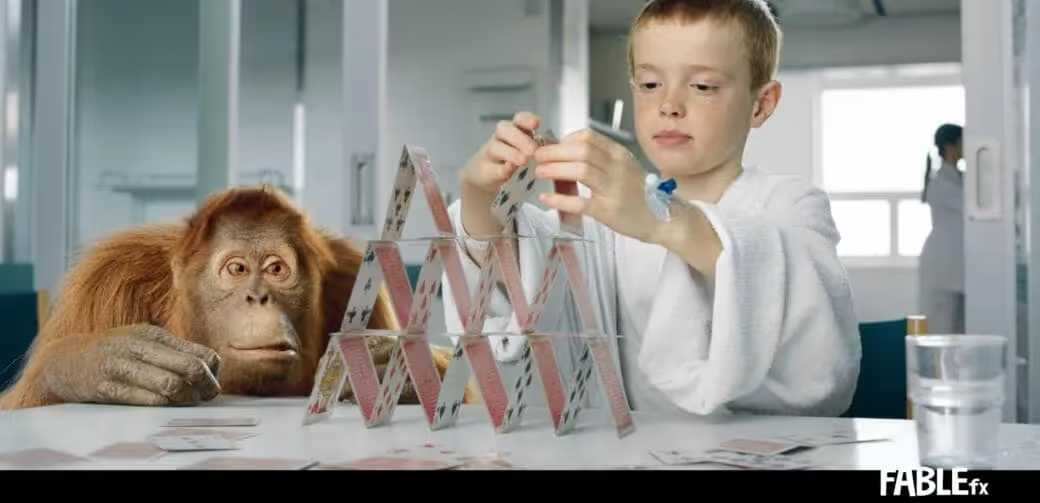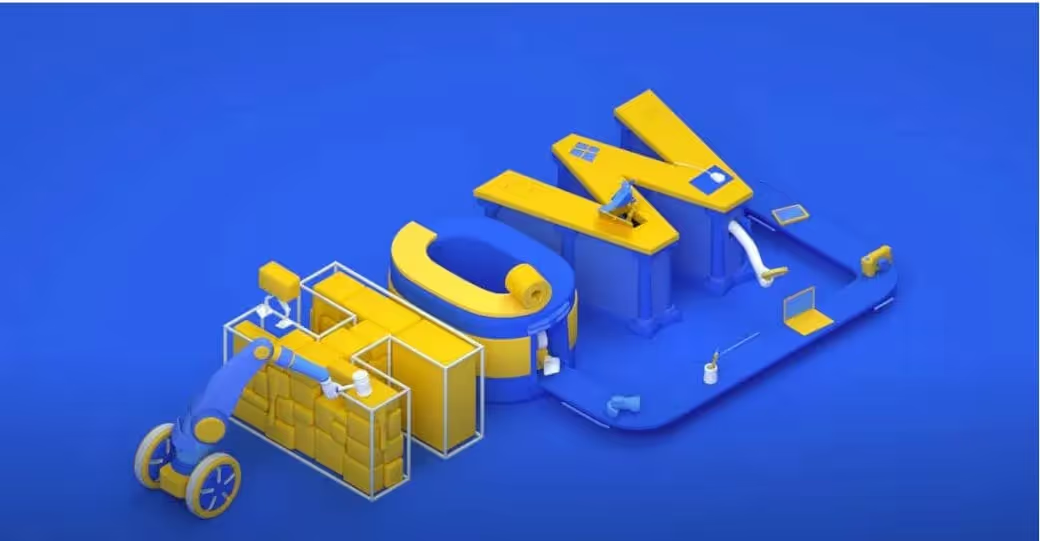-min.avif)
All 3D artists took up the trade because of an interest in something that the medium could provide. For some, it could be how faces can flow across the topography of an object to express its features. For others, the representation of natural phenomena on a physical surface. The limitless ability to use light to depict a subject or the joy of practicing cinematography without any logistical constraints.
You may be drawn to the expression of movement in three dimensions - watching your models trace perfect sinusoidal patterns in virtual space. The anticipation and release in a character’s jump or watching a rolling ball ease gracefully to a stop. If this is the case, the 3D animation process may be the answer to your particular creative compulsion!
Many industries feature animation in their 3D production pipeline, and few specialists are as sought after as 3D animators. In general, mastering animation requires studying its own set of fundamentals and constant, rigorous practice. For those that are up to the task, the rewards are great.
Specializing in the process of 3D animation is already a niche, but within that niche, there are opportunities for animators of various preferences and levels of training to shine. Whether you’re a generalist looking to further your practice as an animator, a student, or even entirely new to 3D, this article will hopefully give you a glimpse of what avenues out there align with your interests.
Here on our online render farm, we help individual creators and studios with the end stages of a 3D animation pipeline - rendering the animation! Through this experience, we can list some of the most common types of animation we’ve seen on our farm. If you need some extra rendering power for a project, come by our website! In any case, here are the types of animation that usually come our way.
This field might be the most glamorous of them all. As a character animator, you breathe life into the people, animals, robots, or monsters in movies, video games, TV series, or even commercials. You use the principles of movement, action analysis, and acting to describe your subjects. Because you play a big role in the believability and relatability of characters, you will always be in demand. Even the most sophisticated motion capture tech will need the hands of a character animator to ensure success. You’re a rockstar puppet master with a solid place in many major industries.
FABLEfx is a studio focusing on creature animation for VFX. Their work is featured in films, advertisements, and other media. They’ve worked with clients such as HBO Nordic, BMW, and Ferrero and are easily one of the premier studios for this type of work. Their animators are a vital ingredient to their success. That they can create believable creatures interacting with real people is a testament to the mastery of their 3D animators.

Motion graphics is also about giving objects personality, but instead of working with rigged characters, it focuses on abstraction. In some ways, as a motionographer, you are a visual communicator first and foremost- using movement to create associations and narratives with otherwise inanimate objects or graphical shapes and forms.
In 3D, you have modifiers and dynamic simulation in your bag of tricks to make visual stories to disseminate information, further a point, or express the verbally inarticulable in an ident or OBB for a film or television series. While it is possible to work in motion graphics and use 3D exclusively, you most likely work in both 3D and 2.5D software (like Cinema 4D and After Effects, for example).
-min.avif)

Motion graphics can be challenging because it demands an understanding of movement and how best to get an idea across using visual elements. It’s the art of making clear and concise statements in motion that are also beautiful to see.
If a motionographer is a storyteller, you are a visual poet. You lean more towards visual metaphor to complement performative arts like music and dance. You work with procedural systems to curate sequences that sync to rhythms and create larger-than-life experiences for concerts, festivals, music videos, and Gallery events. You are in step with your culture and can leverage that to create a compelling political statement or a formidable social media presence. You often work alone and have accumulated more experience.

In this example, the visuals surrounding the performer are not just an arbitrary spectacle but use geometrical shapes and light to create a visual representation of the technology and dynamism in Deadmau5’s flavor of Electronic Dance Music.
Just as photographers and videographers use camera work to present real-world subjects from a unique lens, so do their counterparts in the digital world. As part of a team, you use the 3D camera to create shots for anything from flythroughs of architectural renders, sequences that highlight a product’s appealing features, and of course, shots for a film.
You use principles of cinematography along with animation principles as your foundations, and that, along with your general knowledge of 3D, allows you to wear several hats as an individual and team member to meet various objectives.
Specializing in camera work may not necessarily mean you can get paid to animate cameras exclusively. You may need to work on other aspects of the 3D production pipeline, but it could make you the go-to person for the role.

Because the camera represents our visual experience of an environment, how you position and move it through space determines mood, continuity, and visual appeal. In architectural visualization, whether the client approves the work rests heavily on the final shots.
As you might have gathered, much of your understanding of the 3D animation process and animation fundamentals can qualify you for many of these fields. As you practice, trying your hand at some of these types of work can be beneficial. Suppose you’re aspiring to be a character animator, for instance. In that case, spending some time on motion graphics will strengthen your execution of fundamental concepts (like easing and squash-and-stretch), which will pay off once you reach the goal.
It’s also worth mentioning that we only see the rendered frames of projects we troubleshoot or from clients who participate in our case studies, so there are most likely more job or career possibilities available to 3D animators that we just haven’t seen.
In any case, we hope this article left you interested in or more motivated to learn more about the process of 3D animation, and maybe one day, we’ll see you on our farm as well! Happy animating!